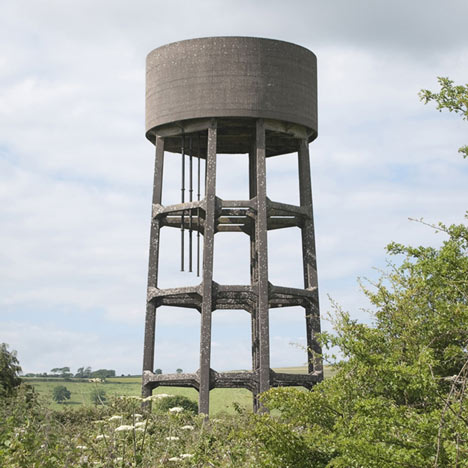Photographer Jamie Young is compiling an archive to document the history of water towers in Ireland.
As well as photographing the towers, Young has gathered drawings, maps, images and documents that chart the history of each one and their relationships to architectural periods and styles.
Young explains how property websites provided a resource for locating the structures, which are often used as way-finding landmarks when giving directions.
"I hope to firstly list and then document every tower still standing in Ireland," says Young. "It is a photographic essay, conservation piece, research project and an archive of history."
The project was inspired by the work of German artists Bernd and Hilla Becher, who spent years photographing industrial structures in black and white.
Other recent photography stories on Dezeen depict distorted views of American cities and landscapes and a series of rooms viewed from the ceiling.
See more photography stories on Dezeen »
Here's a project description from Jamie Young:
Water Towers of Ireland is a research project undertaken by Jamie Young and ongoing since June 2010. The project began with an urge to draw people closer to these objects which seem to permanently sit on the horizon, and it quickly grew into an obsession. Part inventory, part photographic essay and part history, the work now includes maps, anecdotes, drawings, polaroids, large prints and an exhibition.
Exploring water towers through photography, the images of Bernd and Hilla Becher quickly come to mind. The Bechers’ studies of industrial typologies were strictly documentary in nature and were often exhibited by type, laid out in grids. Each piece of industrial architecture was photographed in black and white, in flat light and in isolation of its surroundings. This approach meant that similar forms of structure could be easily compared, while also leaving them devoid of their individual character.
Stepping away from the hard documentary style of the Bechers’ series, Young’s images look to give an emotive value to these objects, these erratics of our everyday landscape. His photographs convey their personalities and act as portraits, while accounting for a lack of uniformity in scale, surroundings and weather conditions.
Jamie became interested in water towers because of their form, singular use and roles as landmarks. While researching and cataloguing the towers, he also found that they could indicate a timeline in the history of the country - from the oldest water towers of railway stations, through the progression of concrete construction, and on to the need for larger reservoirs in recent times, when communities have simply outgrown their elevated supply. While these angles all helped to form a long inventory and map nearly two hundred towers, the most interesting route to discovery was through property websites. In this instance, the vital role of the water tower is stripped away and it now stands only as a landmark – “…and take the last exit to the left before the water tower”.
The first strand of this work culminated in an exhibition last April. Opened by Prof. Hugh Campbell, the show consisted of a selection of photographs and information gathered as part of the project, and was presented as a mix of large prints, instant prints, text and maps. What Young found through this exhibition, is that once these images are placed in front of an audience they themselves start to notice and value the water towers they encounter. As well as contact from photographers doing similar work in other parts of the world, people often send photos of water towers from their travels. The best example of this can be seen on a sister blog – southeastasiancorrespondent.tumblr.com - set up to host the regular offerings from a friend living in Singapore.
The project is ongoing and currently seeking further funding to complete the research and ready the work for publication.

